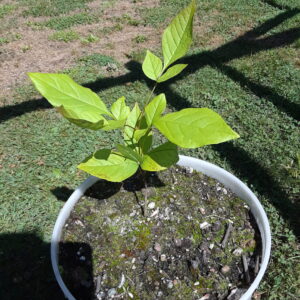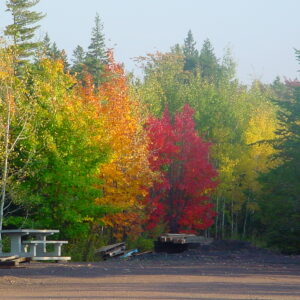American Persimmon
(Common Persimmon)
Diospyros Virginiana
A medium sized tree native to central and eastern USA. The only native species of the Ebony family with hard, almost black heartwood making it popular in carpentry. Often planted as an ornamental due to its large orange fruit persisting into the winter and foliage that turns yellow to purple in fall. The ripe fruit is very sweet and often eaten fresh from the tree or used in a variety of baked goods. Production should begin after 5 to 10 years. Each tree has either male or female flowers so at least 2 trees must be planted; more is better.
Additional information
| Foliage | Deciduous |
|---|---|
| Locale | Native to North America |
| Height | Medium (30-60ft) |
| Width | Moderate |
| Form | Oval, Round |
| Growth Rate | Slow |
| Longevity | Moderate (50 to 100 years) |
| Hardiness Zones * | 4, 5 |
| Sun Exposure | Full Sun (over 6 hrs), Partial Sun (4 to 6 hrs) |
| Soil Preferences * | Moist, Slightly Acidic, Well Draining |
| Soil Tolerances | Clay, Dry, Slightly Alkaline, Wet |
| Other Tolerances | Occasional Drought, Urban Pollution, Walnut Toxicity |
| Ornamental Interest | Fruit, Leaves (colour) |
| Human Value | Carpentry (wood), Edible (fruit) |
| Wildlife Value | Bees (flowers), Birds (fruits/seeds), Butterflies (flowers), Insect Pollinators (flowers), Large Mammals (fruits/seeds), Small Mammals (fruits/seeds) |
| Seed Collection | Ordered Online |
| Planting Considerations | Messy Seed Litter, Produces Suckers, Tricky to Transplant |













